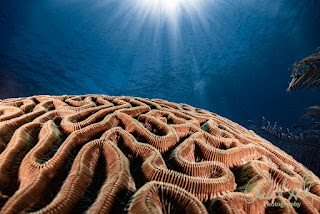Mastering Photography: A Starting Guide to Essential Camera Controls
After finally purchasing your first camera, you insert the batteries, and new flash card, switch it on, and take your first picture.
Unfortunately, this picture does not look good, it doesn't look anything like what you hoped for or saw in person. You know that the camera is not at fault, you have seen the advertisements and sample pictures. So what is the problem? Before you throw the camera away or return it, let's look at some essential camera settings and what each does to a picture.
Introduction:
It's essential to be familiar with the controls of your digital camera to achieve the best results. To unlock the potential of your camera, you need to master key controls that can shape the character of your photographs. In this guide, I'll cover ten essential controls that every photographer should know, listed in order of importance. We'll start with the PASM dial, Aperture, Shutter Speed, and ISO, and delve into their purposes and the profound effects they have on crafting captivating images.
An Ansel Adams quote goes, “There’s nothing worse than a sharp image of a fuzzy concept.” Meaning, don’t focus on equipment so much that you forget about what really matters. Always remember to put your vision and creativity first, and let the tools follow.
You need to utilize your camera to its fullest potential, and you should be completely comfortable with the controls.
That way, when you see a shot you desperately want to capture, you won’t find yourself fumbling around.
The first four that I will cover are the most important.
- PASM (Program, Aperture Priority, Shutter Priority, Manual) Dial: This dial on the top of the camera allows you to choose between different modes as defined below. A or Av (Aperture Priority) mode is one of the most commonly used camera modes, even by professionals, although with my set-up, I personally use M (Manual) mode (go ahead and ask me why in the comment section below).
- Purpose: Determines the camera's operating mode.
- Effect on Photographs:
- Program (P): The camera selects both aperture and shutter speed.
- Aperture Priority (A): Allows manual control of aperture while the camera sets the shutter speed.
- Shutter Priority (S): Enables manual control of shutter speed while the camera sets the aperture.
- Manual (M): Gives full manual control over both aperture and shutter speed.
- Aperture:
- Aperture is the variable opening inside your lens that allows a designated amount of light to pass through to your camera.
- While the shutter controls the length of time that light hits your sensor, the aperture controls the amount of light.
- Aperture is measured in f/stops: f/1, f/1.4, f/2, f/2.8, f/4 and so on.
- Purpose: Controls the size of the lens opening, regulating the amount of light entering the camera.
- Effect on Photographs: Adjusting the aperture alters the depth of field. A wider aperture (lower f-number) results in a shallower depth of field, ideal for isolating subjects against a blurred background.
- Shutter Speed:
- Purpose: Determines the duration the shutter remains open, controlling exposure time.
- Effect on Photographs: Faster shutter speeds freeze action, while slower speeds introduce motion blur. It's crucial for capturing sharp images of moving subjects or conveying a sense of motion in a scene.
- ISO:
- Purpose: Adjust the camera sensor's sensitivity to light.
- Effect on Photographs: Higher ISO values are suitable for low-light conditions but introduce more noise/grain. Lower ISO values provide cleaner images but may require more available light.
- White Balance:
- Purpose: Adjust the color temperature of the image to match the lighting conditions.
- Effect on Photographs: Correct white balance ensures accurate color representation, preventing images from appearing too warm (yellow) or cool (blue).
- Exposure Compensation:
- Purpose: Overrides the camera's automatic exposure settings for manual adjustments.
- Effect on Photographs: Exposure compensation allows you to brighten or darken images, useful in challenging lighting situations for achieving the desired look.
- Focus Mode:
- Purpose: Determines how the camera focuses on the subject.
- Effect on Photographs: Different focus modes, such as single or continuous autofocus, impact how the camera locks onto and tracks moving subjects.
- Metering Mode:
- Purpose: Determines how the camera evaluates and meters the scene for proper exposure.
- Effect on Photographs: Metering modes, like spot or matrix metering, influence how the camera measures and interprets light in different parts of the frame.
- Aspect Ratio:
- Purpose: Defines the proportional relationship between the width and height of the image.
- Effect on Photographs: Choosing different aspect ratios, such as 4:3, 3:2, or 16:9, influences the composition and visual impact of your photographs.
- Flash Compensation:
- Purpose: Adjusts the power of the camera's built-in flash or an external flash unit.
- Effect on Photographs: Allows for control over the intensity of the flash, preventing overexposure in close-up shots or adding fill light in low-light conditions.
I am eagerly anticipating your valuable feedback and suggestions.
Sincerely,
Bob Herb




Comments
Post a Comment
Please let me know your comments.